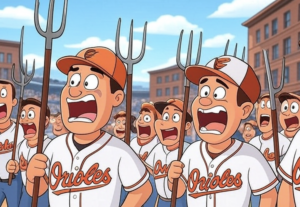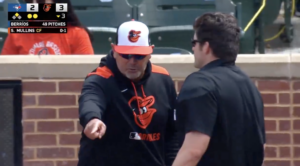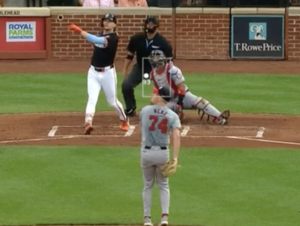Baseball is all about playing the odds. Managers, scouts, and the baseball nerds are constantly watching players, film, and crunching numbers to try and put the odds in their favor. One of the most misunderstood and hated aspects of the game of numbers is the art of bullpen match-ups.
Around the 7th, 8th, and 9th inning in a close ball game, it becomes a game of chess between the two managers. Both try to gain the upper hand by pinch-hitting, pinch running, and shuffling the bullpen around for favorable match-ups. This part of the game has come under scrutiny for slowing down an already slow game, and also because some do not understand the reason behind pulling a starter or hot-hand reliever in favor of a specific match-up.
A manager’s favorite match-up is bringing out one his southpaws to face another left handed batter.
Why?
Essentially the match-up is about physics and deception, but is supported by the numbers.
Left-handed pitchers tend to throw more across their bodies than right-handed pitchers. By following through across their bodies it hides the baseball from the batter, not allowing them to pick up the pitchers point of release until the last moment. Anybody who has ever been around the game of baseball has heard the phrase “See the ball, hit the ball”, so by essentially hiding the ball from the batter an extra split-second longer, it doesn’t allow the batter as much time to pick up the ball or any spin it might have on it.
This moment of deception is especially crucial against a left-handed batter. Since a left-handed pitcher’s breaking ball breaks away from a left handed batter, and it is harder to pick up the spin on the ball, a pitch that may seem to be a strike on the outside of the plate could quickly tail way out into the right handed batter’s box.
Conversely, a ball that may look like is coming straight towards the batter’s head could curve right into the zone for strike three. I always love to see a batter’s knees buckle and then the ball drop right into the catcher’s mitt for a backwards “K”, that is followed by the baseball walk of shame back to the dugout (you might also recognize this walk when a runner gets picked off).
But managers don’t rely just on physics. They want to see evidence!
Overall, the Major leagues batted .227 in LHB vs. LHP match-ups and .262 RHB vs. LHP. That is a significant difference and exactly why managers are willing to pull their starters and relievers to get the match-ups they believe give them the best odds. Baseball is a game of numbers no matter how you spin it, and one the greatest masters of the game, as talked about in the last edition of Bullpen Chatter, is the Show.
Buck knows exactly how to maneuver his bullpen and which batters struggle against left handed pitchers. From there he brings in one of the best left handed specialists in the game, Troy Patton. Patton pitched a solid 55.2 innings for the Birds while maintaining a 2.43 ERA, but where Patton truly dominated was in his short relief roles against left handed batters. Left handed batters only hit .212 against Patton, and his SO/BB ratio was 5.17. Compared to right handed batters, where he only had a 3.00 SO/BB ratio. Both numbers against left and right-handed batters are quite impressive, but his dominance clearly shows against the lefties.
Buck also found another gem in Brian Matusz. Matusz was unsuccessful as a starter last year, but found his niche late in the season in the bullpen. Brian was mostly used in a lefty specialist role and held a 0.74 ERA once moved into the bullpen.
Left-handed batters only hit .219 during his 2012 campaign, and one of his most memorable appearances was his punch-out versus Josh Hamilton in the AL Wild Card game in three straight pitches. That was a defining moment for Matusz and served up sufficient evidence that he belongs in the bullpen. His efforts in the pen could earn Brian another chance at becoming a starter, but as for the 2013 Orioles he will make a larger impact in relief.
So the next time you feel the urge to sigh or roll your eyes when a manager trots onto the field to bring out their left-handed specialist, keep in mind that such tactical maneuvers are a part of the game and they aren’t going away. The proof lies in the numbers and the numbers don’t lie.
And it part they help to make baseball the unique game that it is.









